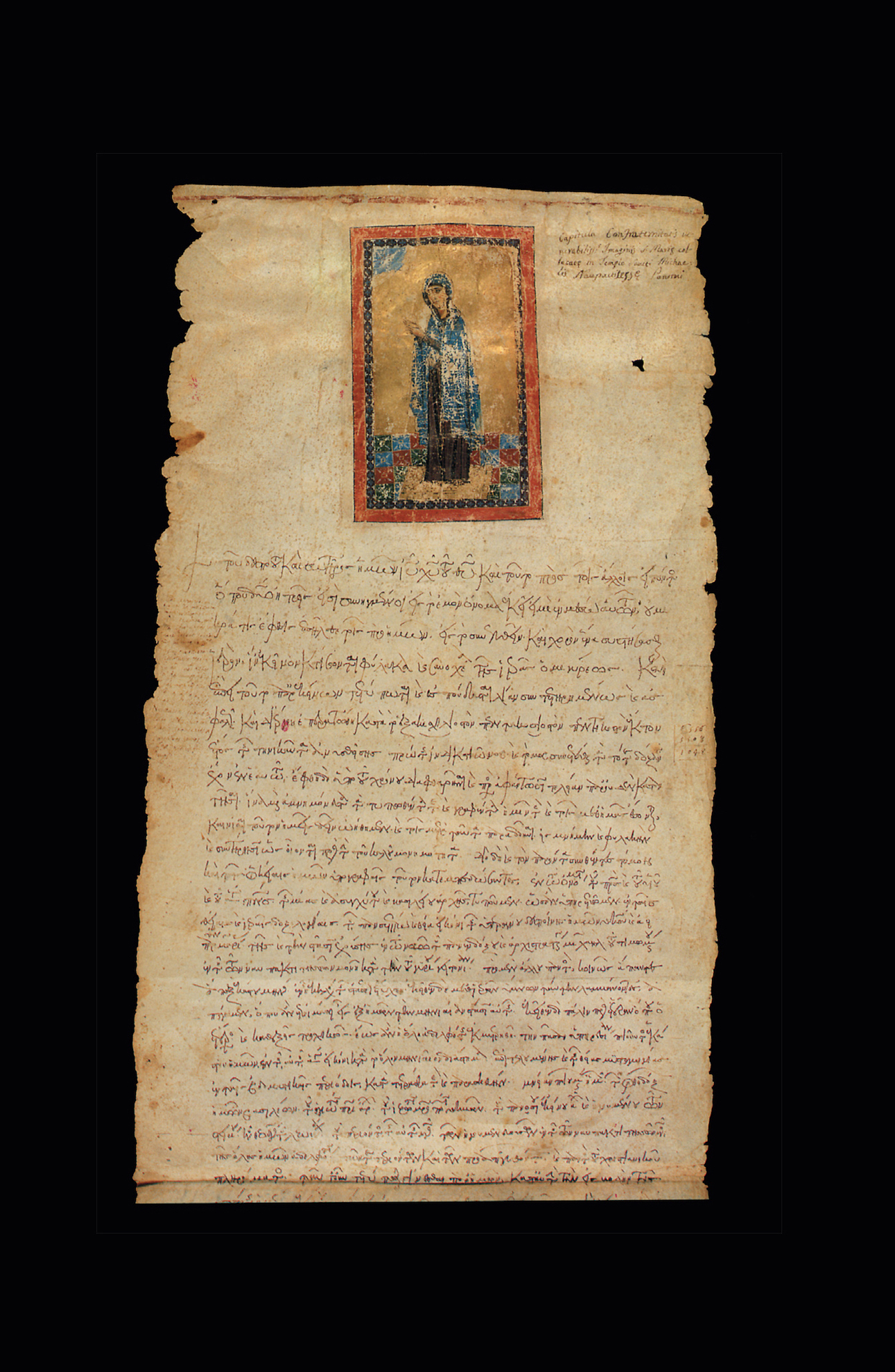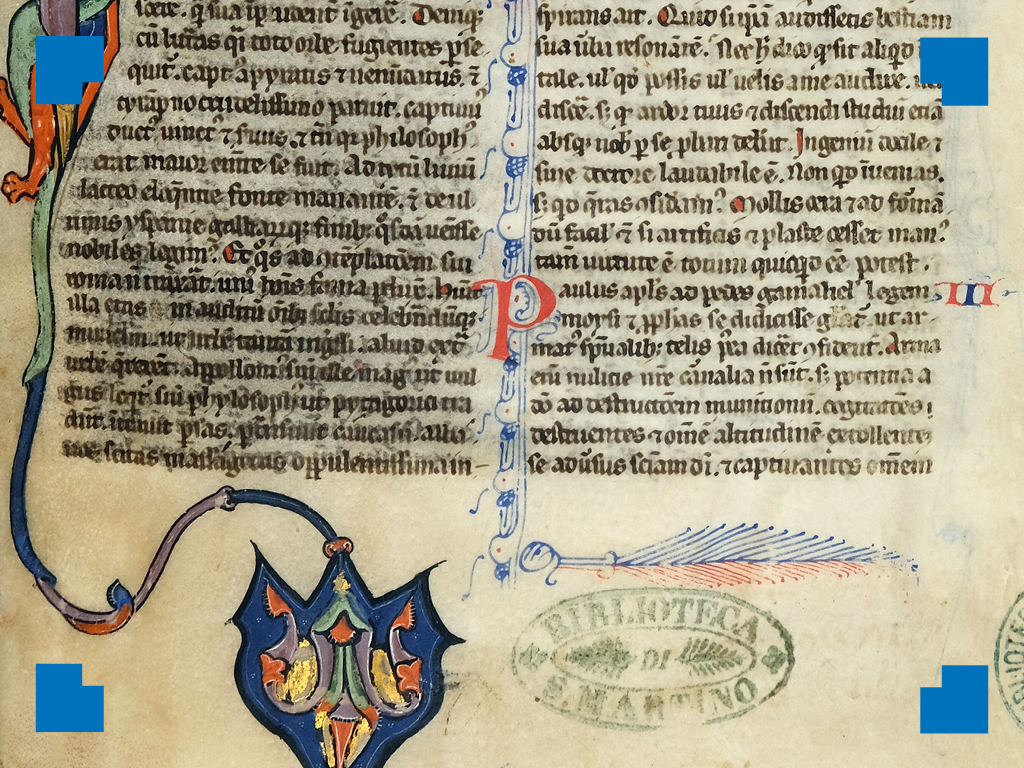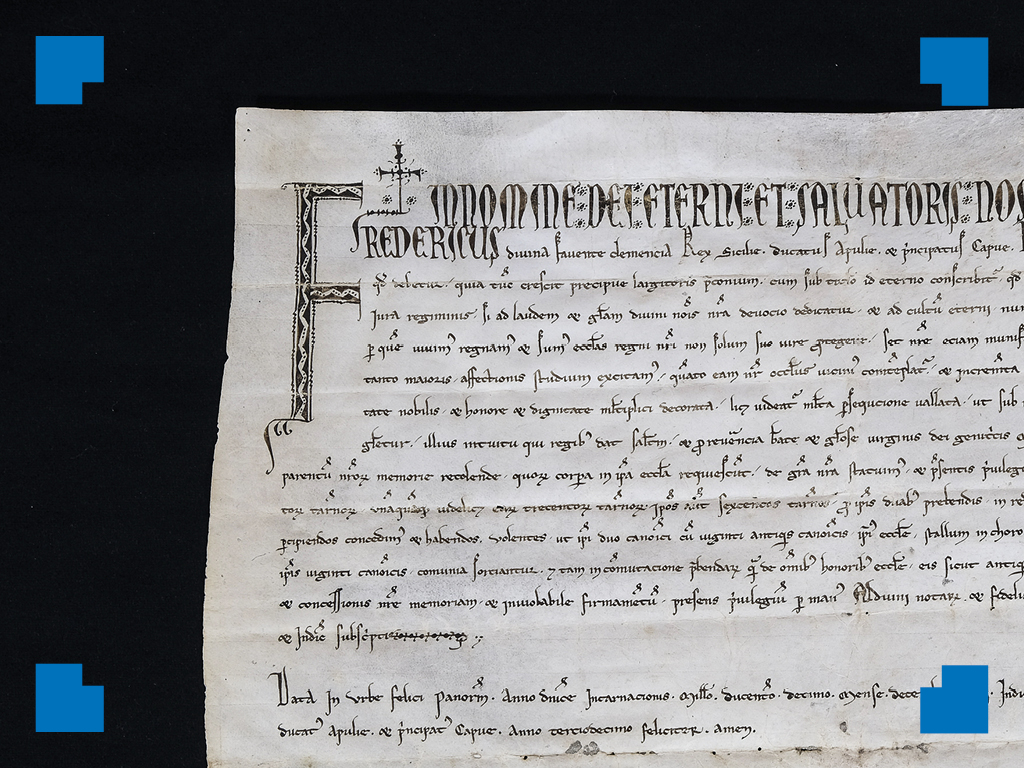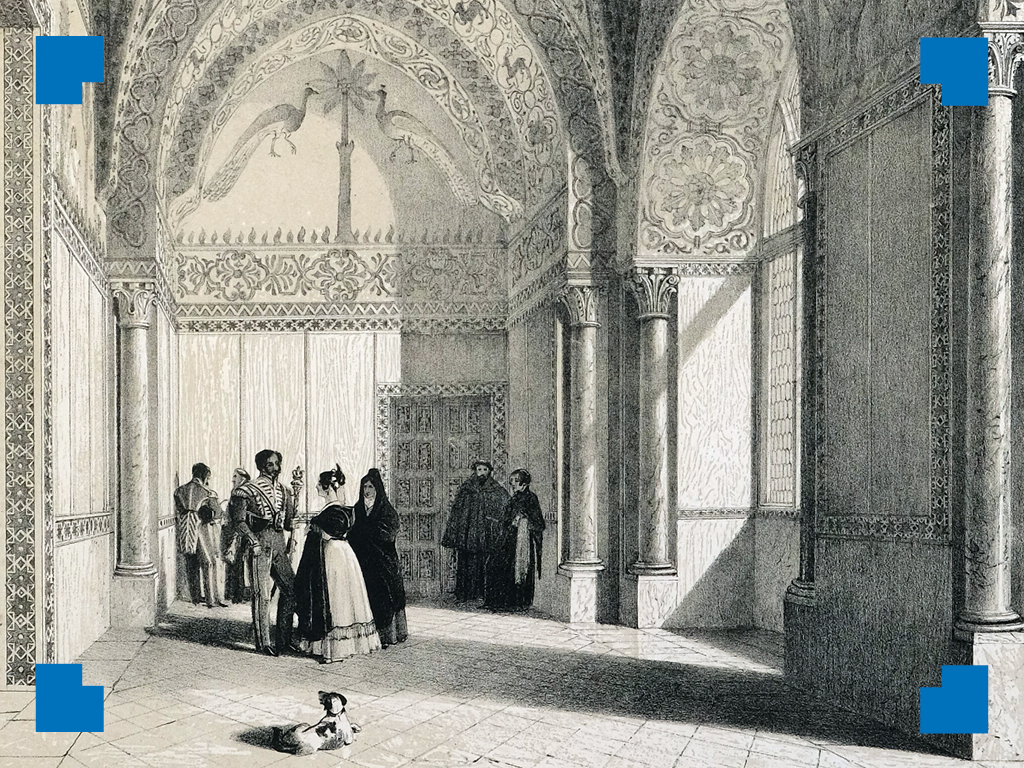
10. Typikón of the confraternity of the Madonna Naupaktiótissa
Bizantine scriptorium, 1080
Typikón (regulation) of the confraternity of the Madonna Naupaktiótissa (of Nàfpaktos) from Thebes
parchment manuscript (143×42 cm)
Palermo, Palatine Chapel, Tabularium, parch. 1;
Ministero dell’Interno, FEC,Dipartimento delle Libertà Civili e l’Immigrazione,
Direzione Centrale degli Affari dei Culti e per l’Amministrazione del Fondo Edifici di Culto
The parchment scroll on display (dating 1080) contains the renewed rule of an important confraternity, founded in 1048 in Thebes (Greece) and including priests, monks and laypeople, including three women, who all declared themselves “servants of the Madonna of Nàfpaktos”.
The group of devotees met on the first day of each month and, singing sacred songs, carried the icon in procession from the church of San Michael (annexed to a female monastery dedicated to the same Madonna) to another church prepared for the occasion by one of the members of the congregation.
The sacred image that was at the center of the cult and of the procession, which is not described in the document, was probably a monumental reproduction of the one displayed in the beautiful miniature on gold background that precedes the text of the regulation, that is, a Madonna “of the Sacred Belt” or “of the Intercession” (cat. 7).
This monthly rite provided the monastery and the confraternity with a large income, made up of the offerings of the faithful.
This artifact probably landed in Palermo, along with a rich booty, after the pillage of Thebes and Corinth in 1147 by the Norman fleet led by George of Antioch, under the King of Sicily Roger II of Hauteville, father of Queen and Empress Constance.


